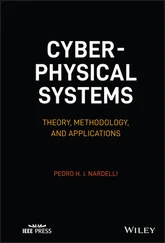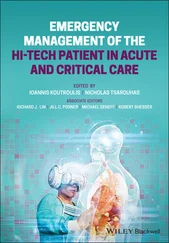8 Have you identified a qualified engineering and design firm to conduct a peer project design review?
9 Have you considered directly hiring the commissioning agent to provide true independence?
10 Have you discussed and agreed to a division of responsibilities between the construction manager and the commissioning agent?
11 Do you plan to hire the ultimate operating staff ahead of the actual turnover to operations so they will benefit from participation in the design, construction, and commissioning of the facility?
12 Have you made a decision on the commissioning agent early enough in the process to allow participation and input on commissioning issues and design review by the selected agent?
13 Is the proper level of fire protection in place?
14 Is the equipment (UPS or generator) being placed in a location prone to flooding or other water damage?
15 Do the generator day tanks or underground fuel tanks meet local environmental rules?
16 Does the battery room have proper ventilation?
17 Has adequate cooling or heating been specified for the UPS, switchgear, or generator room?
18 Are the heating and cooling for the mechanical rooms on the power protection system?
19 Have local noise ordinances been reviewed, and does all the equipment comply with the ordinances?
20 Are the posting and enforcement of no‐smoking bans adequate, specifying, for example, no smoking within 100 feet?
21 Are water detection devices used to alert building management of leak or flooding issues?
1 Is there a benefit to using an existing vendor or supplier for standardization of process, common spare parts, or confidence in service response?
2 Have the commissioning, factory, and site testing requirement specifications been included in the bid documentation?
3 If the project is bid, have you conducted a technical compliance review that identifies exceptions, alternatives, substitutions, or non‐compliance to the specifications?
4 Are the procurement team members versed in the technical nuances and terminology of the job?
5 If delivery time is critical to the project, have you considered adding late penalty clauses to the installation or equipment contracts?
6 Have you included a bonus for the early completion of the project?
7 Have you obtained unit rates for potential change orders?
8 Have you obtained a GMP (Guaranteed Maximum Price) from contractors?
9 Have you discussed preferential pricing discounts that may be available if your institution or your engineer and contractors have other similar large purchases occurring?
1 Do you intend to create and maintain a list of observations and concerns that will serve as a checklist during the acceptance process to ensure that these items are not overlooked?
2 Will members of the design, construction, commissioning agent, and operations team attend the factory acceptance tests for major components and systems such as UPS, generators, batteries, switchgear, and chillers?
3 During the construction phase, do you expect to develop and circulate for comment the start up plans, documentation formats, and pre‐functional checklists that will be used during startup and acceptance testing?
4 Since interaction between the construction manager and the commissioning agent is key, will you encourage attendance at the weekly construction status meetings by the commissioning team?
5 Will an independent commissioning and acceptance meeting be run by the commissioning agent, ensuring that everything needed for that process is on target?
6 Will you encourage the construction, commissioning, and operations staff to walk the job site regularly to identify access and maintainability issues?
7 If the job site is an operating critical site, do you have a risk assessment and change control mechanism in place to ensure reliability?
8 Have you established a process to have independent verification that labeling on equipment and power circuits is correct?
Commissioning and Acceptance
1 Do testing data result sheets identify expected acceptable result ranges?
2 Are control sequences, checklists, and procedures written in plain language, not technical jargon, that is easily misunderstood?
3 Have all instrumentation, test equipment, actuators, and sensing devices been checked and calibrated?
4 Is system acceptance testing scheduled after balancing of mechanical systems, and are electrical cable/breaker testing complete?
5 Have you listed the systems and components to be commissioned?
6 Has a detailed script sequencing all activities been developed?
7 Are all participants aware of their responsibilities and the protocols to be followed?
8 Does a Team Directory with all contact information exist, and is it available to all involved parties?
9 Have you planned an “all hands‐on deck” meeting to walk through and finalize the Commissioning schedule and Scripted Activities?
10 Have the format and content of the final report been determined in advance to ensure that all needed data is recorded and activities are scheduled?
11 Have you arranged for the future facility operations staff to witness and participate in the commissioning and testing efforts?
12 Who is responsible for ensuring that all appropriate safety methods and procedures are deployed during the testing process?
13 Is there a process in place that ensures training records are maintained and are updated?
14 Who is coordinating training and ensuring that all prescribed training takes place?
15 Will you videotape training sessions to capture key points and for use as refresh training?
16 Is the training you provide both general systems training as well as specifically targeted to types of infrastructure within the facility?
17 Have all vendors performed component level verification and completed pre‐functional checklists prior to system level testing?
18 Has all system level acceptance testing been completed prior to commencing the full system integration testing and “pull the plug” power failure scenario?
19 Is a process developed to capture all changes made and to ensure that these changes are captured on the appropriate as‐built drawings, procedures, and design documents?
20 Do you plan to re‐perform acceptance testing if a failure or anomalies occur during commissioning and testing?
21 Who will maintain the running punch list of incomplete items and track resolution status?
1 Have you established specific Operations Planning meetings to discuss the logistics of transferring newly constructed systems to the facility operations staff?
2 Is all as‐built documentation, such as drawings, specifications, and technical manuals, complete, and has it been turned over to operations staff?
3 Have position descriptions been prepared that clearly define the roles and responsibilities of the facility staff?
4 Are Standard Operating Procedures (SOP), Emergency Action Procedures (EAP), updated policies, and change control processes in place to govern the newly installed systems?
5 Has the facility operations staff been provided with warranty, maintenance, repair, and supplier contact information?
6 Have spare parts lists, setpoint schedules after Cx is complete, TAB report, and re‐commissioning manuals been given to operations staff?
7 Are the warranty start and expiration dates identified?
8 Have maintenance and repair contracts been executed and put into place for the equipment?
9 Have minimum response times for service, distance to travel, and emergency 24/7 spare stock locations been identified?
Читать дальше












